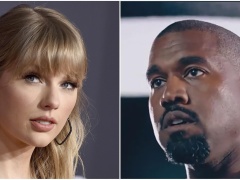
Beyond anything else David Crosby did or made in his life, the thing that he will most be remembered for, after dying at the age of 81, is that he had the voice of a bruised and haunted angel – singing alone or when paired with his friends and rivals in the Byrds, Crosby, Stills and Nash or Crosby, Stills, Nash and Young. And that his smartly romantic, experimental songwriting and skills drove the country-tinged, folk-rock movement of the 1960s and 1970s.
Crosby’s work was, in the words of his longtime singing partner, Graham Nash, “fearless… he spoke his mind, his heart, and his passion through his beautiful music.” Even if he was singing the words and melodies of Bob Dylan or those composed with Roger McGuinn and Graham Nash, the heavenly intensity, slippery jazz influence and alternative tuning quirk was all Crosby.
Here are 10 of Crosby’s best, most angelic musical moments of a long and storied career.
The Byrds, “All I Really Want to Do” (1965)
Roger McGuinn may have concocted the Byrds’ ringing signature 12-string guitar sound, but it was David Crosby’s uniquely brooding vocal phrasing and full-blooded harmonies that lifted the band beyond mere Bob Dylan copyists at their start. Crosby got his first shot to shine when he took the lead on the bridge to the Byrd’s second single, Dylan’s “All I Really Want to Do,” and never moved out of the limelight.
Pensively prickly, breezily jazzy and slowly soulful, this ominous, Crosby-penned ballad sounds more in league with the alternative tunings of the Velvet Underground than it does his sunny bandmates. This is Crosby at his most majestically moody.
The Byrds, “Lady Friend” (1967)
The rambling jangle, off-kilter rhythms, chirpy brass parts and warm, complex harmonies of “Lady Friend” are all highlights of Crosby’s self-written mini-epic. Go beyond the song’s strangely alluring tangle and its deliriously loving “can’t live without her” lyrics, and you’ll find that it’s Crosby’s vocals alone that fill the track because he replaced Chris Hillman and Roger McGuinn’s backing vocals with his own vocal overdubs, much to the rest of the Byrds’ chagrin.
Jefferson Airplane, “Triad” (1968)
Pop’s first great paean to the ménage à trois, free love and science fiction was initially recorded by the Byrds (but unreleased during Crosby’s time there), and eventually released by CSNY on 1971’s “4 Way Street.” But it was a cool and spooky-sounding Grace Slick and a slow, twanging Jefferson Airplane that made the Crosby-penned “Triad” truly trippy and beautiful.
Lolling against the gentle pluck of acoustic guitar, the old, folksy, Crosby-written love song to three objects of his Queenly affection features unusual time signatures (a motif inspired by Miles Davis’ “Sketches of Spain”), a nod to Joni Mitchell, and grandly divine sonic and emotional twists. Crosby once called it his best song. He might be right.Crosby, Stills, Nash & Young, “Almost Cut My Hair” (1970)
From the 1970 album “Déjà Vu,” Crosby lowers his octave, allows the brusque soulfulness of his voice to come through, and nestles against the nervous cross-cutting guitars of Young and Stills and the organ whir of Nash to tell a tale of tonsorial freedom. Better now than you may remember it, “Almost Cut My Hair” is thick, rich anthemic rock at its finest.Crosby, Stills, Nash & Young,“Déjà Vu”(1970)
From his scat-singing intro to the wanderlust in every one of his lyrical and harmonic drifts from the main melody, “Déjà Vu” is Crosby’s bluesy, hippie dream.David Crosby, “Cowboy Movie” (1971)
Taken from his debut solo album “If I Could only Remember My Name…,” Crosby’s wobbly, stoner travelogue and macho jazzy vocals are the deeply grooving, aural equivalent to Dennis Hopper’s “Easy Rider.”Crosby & Nash, “Whole Cloth” (1972)
Playing upon the open-ended narratives of his earlier solo work, Crosby takes time on the debut album from his partnership with Nash, “Graham Nash David Crosby,” for the richly introspective and drifting chord structures of “White Cloth.” Along with being one of his most emotive, floaty vocal performances, the Steely Dan-like backing of guitarist Danny Kortchmar, electric pianist Craig Doerge and bassist Leland Sklar proves to be one of Crosby’s most empathetic and soulful teamings.
Crosby, Stills & Nash, “Shadow Captain” (1977)
Written by Crosby with Craig Doerge, with the handsome harmonies of its vocalists aged like fine wine by the time of this 1977 reunion – all to the tune of rolling congas, pastoral pianos and allegorical tales of lost horizons and missed opportunities.
Crosby had already performed gorgeous backing vocal duties for Phil Collins on a couple of the latter’s hits, “That’s Just the Way It Is” and “Another Day in Paradise,” before teaming with the Genesis singer for the 1993 track “Hero.” Produced and co-written by Collins for Crosby’s third solo album “Thousand Roads,” the jangly ballad is a lovely slice of early ’90s synth-soul.David Crosby, “River Rise” (2021)
Crosby’s voice is softer, rounder and more contoured than in his youth, but his melodies and moods are just as evocative, pointed and poignant as they were in his past and, in harmony with Michael McDonald, still haunted and soulful.






